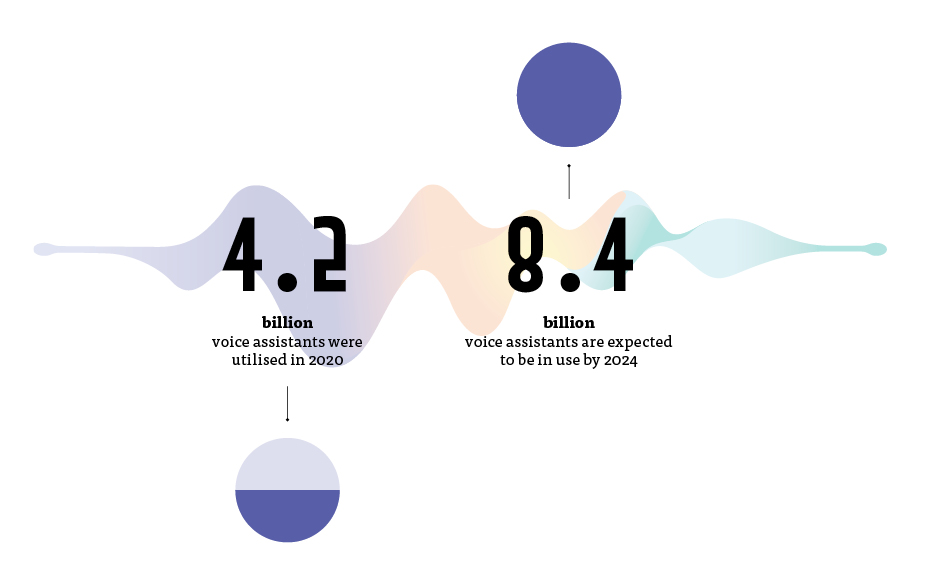As the technologisation of our society increases, so does the importance of Human Machine Interfaces. The latest advancements now enable machines to be controlled intuitively with speech and gestures. In the future, technical systems may even be able to respond empathetically to humans.
Machines have been indispensable partners to us humans in everyday life since time immemorial. It is not only in large production halls or complex industrial manufacturing processes where human and machine-supported processes closely interlock. The number of electronic devices used in the private sphere is also continually increasing – from washing machines to smartphones. Interfaces are the key to enabling humans to interact with these machines or systems.
HMIs use a broad spectrum of functional principles and technologies.
Variety of solutions
The design and functional principles of these Human Machine Interfaces can vary hugely – from a simple mechanical toggle switch to a touch display or a connected mobile device (such as a notebook or smartphone), to name a few.
The operation of machines has changed enormously over the centuries: the first human machines were operated predominantly via levers and cranks. This purely mechanical form of control was increasingly supplemented and eventually replaced by electrical buttons and switches when electrification started at the end of the 19th century. The next major change was brought about by automation and digitalisation: once computers started being used to control systems and machines, it became possible to visualise functions on screens and operate them via keyboards and input devices.
New possibilities through digitalisation
The invention of touchscreens has blurred the boundaries between the display and operation of functions: monitors can now recognise when a user touches a symbol or field and can subsequently translate this action into a digital command. Apple’s products, such as the iPod or iPhone, are iconic examples of how intuitive touchscreens have simplified the operation of devices. They are now also prevalent in industrial systems, in smart home applications and in cars.
Digitalisation has enabled devices and the operation of these to be increasingly adapted to the human user and their personal capabilities. Not only can HMIs now be customised to the individual operator, they can also be modified again and again to reflect new machine functions.
Augmented and virtual reality have also entered the world of Human Machine Interfaces: for example, maintenance and operating personnel can now use smart glasses that provide information from the machine directly “in front of the employees’ eyes”, meaning they no longer have to leaf through manuals to maintain the system.
AI opens up new possibilities for Human Machine Interfaces with the aim of more efficient interaction.
Smart interaction thanks to Artificial Intelligence
The invention of Siri and Alexa a few years ago marked the emergence of another technology on the market – one that has significantly changed the way humans interact with machines: voice control. In many areas today, it is almost a matter of course that a user can give commands directly to devices with their voice – whether in the car or when playing their favourite songs. According to Statista, around 4.2 billion voice assistants were used worldwide in 2020. By 2024, this number is expected to double to up to 8.4 billion. The technological advancements in the underlying artificial intelligence are what have enabled the use of effective voice recognition today. Even in industrial production, it is possible to operate machines by voice despite the interfering background noise.

AI also provides the basis for another form of operation: gesture control, whereby humans can interact with a machine through gestures and movements. Contactless gesture recognition is a complex system that uses several technologies in addition to AI, such as sensor fusion and image recognition using camera systems. So far, the use of gesture control has been largely limited to computer games. But now we’re seeing machines also being equipped with this innovative technology and it is already possible to control robots with gestures.
The latest HMI development is systems that allow the operator to control devices solely by thought. Some companies in the medical industry are already testing implanted chips that capture brain impulses and translate them into digital commands, for example for writing emails.
From pure operation to assistance
In the future, Human Machine Interfaces will provide various different assistance functions for commissioning, operating, servicing and repairing machines, and also support the process of training users on new systems. Research is already being conducted on solutions that can psychologically interpret human behaviour and register their attention and control capabilities. These so-called empathetic HMIs make it possible for machines such as cars and robots to recognise the intentions of humans in order to work with them flexibly, proactively and safely.


